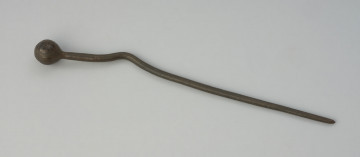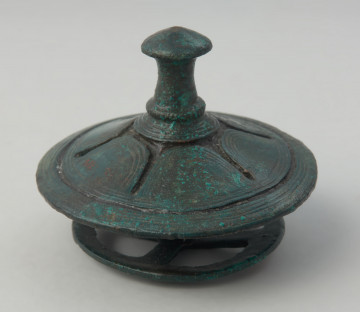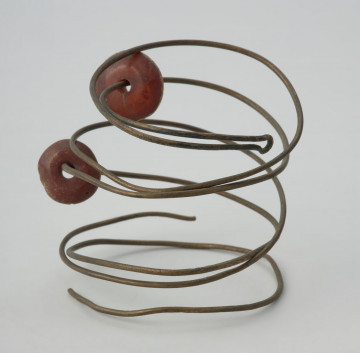
A pin
around 1100 p.n.e. — 900 p.n.e.
National Museum in Szczecin
Part of the collection: Bronze Age
The decorative tutulus (a small, conical ornament) was discovered in the town of Dąbrowa Nowogardzka, most probably in 1903. It comes from a destroyed barrow grave, together with a knife and a bronze pin. This remarkable double tutulus is a local imitation of the specimens known from the area of Denmark and Scandinavia, from the Nordic Bronze Age culture. It can be dated to the Late Bronze Age (ca. 1100 – 900 BC). The tutuli were used to decorate the clothing and the finds from the women’s graves in Scandinavia from Early Bronze Age allow establishing how they were used. It was determined that most probably they were attached to clothes or belts around the buckle. Most commonly they are found in pairs, but there are some known cases of more numerous groups. In the Western Pomerania some tutuli were found among the grave goods from the burials uncovered on the cemetery in Unieradz and on a large barrow cemetery form the Late Bronze Age discovered in the town of Dolice.
Monika Witek
Author / creator
Dimensions
the entire object: height: 5 cm, diameter: 2 cm
Object type
adornment
Technique
broaching, printing, casting
Material
bronze
Origin / acquisition method
legal transfer
Creation time / dating
Creation / finding place
Owner
National Museum in Szczecin
Identification number
Location / status

around 1100 p.n.e. — 900 p.n.e.
National Museum in Szczecin

around 1100 p.n.e. — 900 p.n.e.
National Museum in Szczecin

around 900 p.n.e. — 750 p.n.e.
National Museum in Szczecin
DISCOVER this TOPIC
National Museum in Lublin
DISCOVER this PATH
Educational path